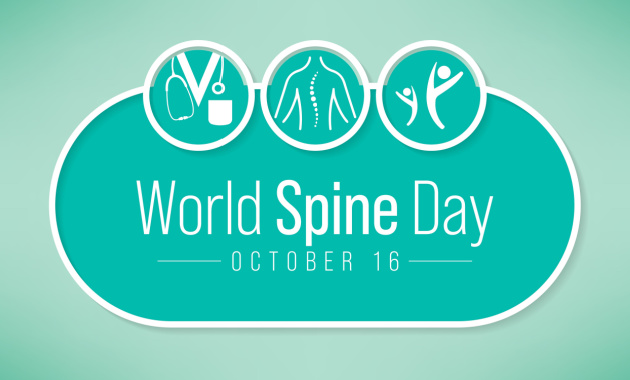
Every year on October 16th, World Spine Day is celebrated to raise awareness about spinal health and promote the importance of maintaining a healthy spine. The spine, also known as the backbone or vertebral column, plays a crucial role in supporting the body’s structure and facilitating various bodily functions. However, due to modern lifestyles and habits, many people suffer from spine-related issues, leading to discomfort, pain, and reduced quality of life.
Maintaining a healthy spine is essential for overall well-being, as the spine is at the core of the body’s stability and mobility. In this article, we will discuss the importance of keeping the spine healthy and provide ten tips for maintaining its well-being.
1. Maintain Good Posture
One of the primary factors affecting spinal health is posture. Poor posture, whether when sitting, standing, or lifting objects, can place excessive strain on the spine, leading to pain and discomfort. Maintaining good posture is essential to minimize this risk [1].
2. Stay Active & Exercise Regularly
Regular physical activity and exercise are important for maintaining a healthy spine. Strengthening the core muscles, including the abdominal and back muscles, can provide better support for the spine[2].
Including stretching and flexibility exercises in your daily routine can help keep the spine mobile and decrease muscle tightness. Yoga and Pilates, in particular, are beneficial for improving spine health [3].
Are you suffering from back pain? Discover our selection of natural products that can help enhance the health of your muscles and bones. Get Relief From Pain
3. Ergonomic Workspace
If you have a sedentary job or spend a lot of time working on a computer, it’s essential to set up an ergonomic workspace. Proper ergonomics can reduce the risk of developing spine-related issues. Ensure that your chair, desk, and computer monitor are all positioned to support a natural and relaxed posture[4].
Improving the health of your spine can lead to better posture, stronger supporting muscles, and a reduced risk of back problems and injuries. Are you experiencing any issues or symptoms related to your spine? Consult Now
4. Maintain a Healthy Weight
Excess body weight, especially around the abdomen, can put additional pressure on the spine and increase the risk of developing back pain and spinal conditions. Maintaining a healthy weight through a balanced diet and regular exercise can alleviate this strain on the spine[5].
Your weight is important. Start your journey to manage your weight. Click here
5. Proper Lifting Technique
Improper lifting techniques are a common cause of back injuries and spine-related problems. When lifting objects, always bend your knees and keep the object close to your body to minimize strain on your back. Moreover, seeking assistance for heavy lifting is advisable whenever possible[6].
6. Quit Smoking
Smoking is a significant risk factor for various health issues, including spine-related problems. Nicotine and other chemicals in tobacco can restrict blood flow to the spinal discs, leading to degeneration and an increased risk of chronic back pain[7].
Eliminate this harmful behavior with our extensive selection of products. Try Our Smoking Cessation Range
7. Use Appropriate Footwear
Wearing the right footwear is essential for spine health. High heels, flip-flops, and unsupportive shoes can disrupt your body’s natural alignment and posture, causing back pain. Opt for comfortable, well-fitting shoes with proper arch support[8].
8. Right Mattress & Pillow
The quality of your sleep can significantly impact your spine health. A comfortable mattress and supportive pillow are essential for maintaining proper spinal alignment during sleep. An old or sagging mattress can lead to back pain, so it’s important to invest in a suitable mattress and pillow[9].
Take a look at our extensive selection of cervical pillows designed to provide your spine with the comfort it deserves. Explore now
9. Manage Stress
Chronic stress can lead to muscle tension, poor posture, and back pain. Practicing stress-reduction techniques such as mindfulness, meditation, or yoga can help alleviate this strain and promote a healthier spine[10].
Final takeaway!
On World Spine Day and every day, it’s essential to prioritize the health of your spine. Incorporating these nine tips into your daily life can help you maintain a healthy spine and reduce the risk of back pain and other spine-related problems. By staying mindful of your posture, engaging in regular exercise, and making healthy lifestyle choices, you can enjoy a pain-free and active life while taking care of your spine. Remember that consulting with a healthcare professional or physical therapist can provide personalized guidance for your specific spine health needs.
(The article is reviewed by Monalisa Deka, Senior Health Content Editor)
References:
5. ShiriR, Karppinen,et al. The association between obesity and low back pain: a meta-analysis. American Journal of Epidemiology, 171(2), 135-154. Published online 2010.